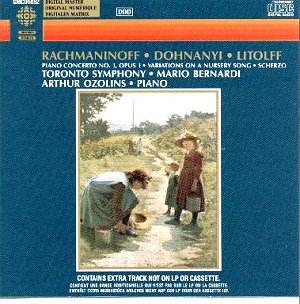 Composer: Johann Sebastian Bach
Composer: Johann Sebastian Bach
Works: Toccata in D major BWV 912; Chromatic Fantasia and Fugue in D minor BWV 903; Aria variata in the Italian manner BWV 989; Italian Concerto in F major BWV 971; Aria from the Clavierbühlein for Anna Magdalena Bach BWV 988; Prelude in C minor BWV 999; Prelude and Fughetta in G major BWV 902; Fantasia in C minor BWV 906
Performers: Terence Charlston, harpsichord
Recording: November 1999
Label: DEUX-ELLES DXL 1017
Johann Sebastian Bach stands as a monumental figure in the canon of Western classical music, with his keyboard compositions often regarded as a pinnacle of Baroque artistry. The Italian Concerto, BWV 971, is emblematic of his ability to synthesize various national styles, melding the exuberance of Italian virtuosity with the contrapuntal sophistication of German tradition. This recording by Terence Charlston offers a refreshing exploration of Bach’s lesser-known works while showcasing the harpsichord’s unique sonic character, particularly through its juxtaposition with more prominent pieces such as the Chromatic Fantasia and Fugue.
Charlston’s interpretation of the Italian Concerto’s opening movement, while initially appearing somewhat cautious in tempo, reveals a thoughtful approach that privileges clarity and detail over mere speed. His phrasing in the Allegro is articulate, allowing the intricate interplay of the parts to shine through, albeit at a slightly slower pace than some might conventionally prefer. The second movement, Andante, is particularly noteworthy for its lyrical beauty; Charlston’s touch is delicate, evoking a serene atmosphere that contrasts effectively with the vigorous outer movements. The concluding Presto bursts forth with joy, demonstrating an exuberance that captures the spirit of the work while maintaining precision.
The inclusion of the Aria variata in the Italian manner, BWV 989, is a commendable choice, as it highlights Bach’s early exploration of variation forms. Charlston’s execution here is characterized by a nuanced approach, where he avoids excessive ornamentation, allowing the inherent beauty of the theme to resonate clearly. The variations unfold with an engaging sense of narrative, particularly in the slower sections where Charlston imbues the music with a depth of emotion that is reminiscent of Buxtehude’s own works. This interpretive choice aligns with the historical context, as Bach’s early works often sought to balance complexity with expressiveness.
Technical aspects of Charlston’s performance are particularly praiseworthy, especially considering the instrument at his disposal—a Ruckers copy by Andrew Garlick. The recording quality is superb, capturing the rich timbral palette of the harpsichord while ensuring that each note is rendered with clarity. The engineering achieves an ideal balance between presence and reverberation, making this disc particularly compelling when listened to on high-quality headphones. The resonant qualities of the instrument lend themselves well to the intricate counterpoint of the Chromatic Fantasia and Fugue, where Charlston navigates the demanding passages with dexterity and flair.
Comparisons to other recordings of these works are inevitable, and while many prominent harpsichordists have offered their interpretations, Charlston’s fresh take on these lesser-known pieces distinguishes this recording. Notably, his sensitivity to phrasing and dynamic shading invites listeners to engage with the music on a deeper level, creating a sense of intimacy that is often overlooked in more bombastic renditions.
This collection of Bach’s keyboard works, anchored by the Italian Concerto and complemented by a selection of his other keyboard masterpieces, stands out not only for its thoughtful performances but also for the impeccable sound engineering that enhances the listening experience. Charlston’s artistry reveals the emotional depth and structural ingenuity of these compositions, making this recording a valuable addition for both seasoned Bach aficionados and newcomers alike. A definitive exploration of Bach’s keyboard legacy that resonates with both historical fidelity and personal interpretation.



